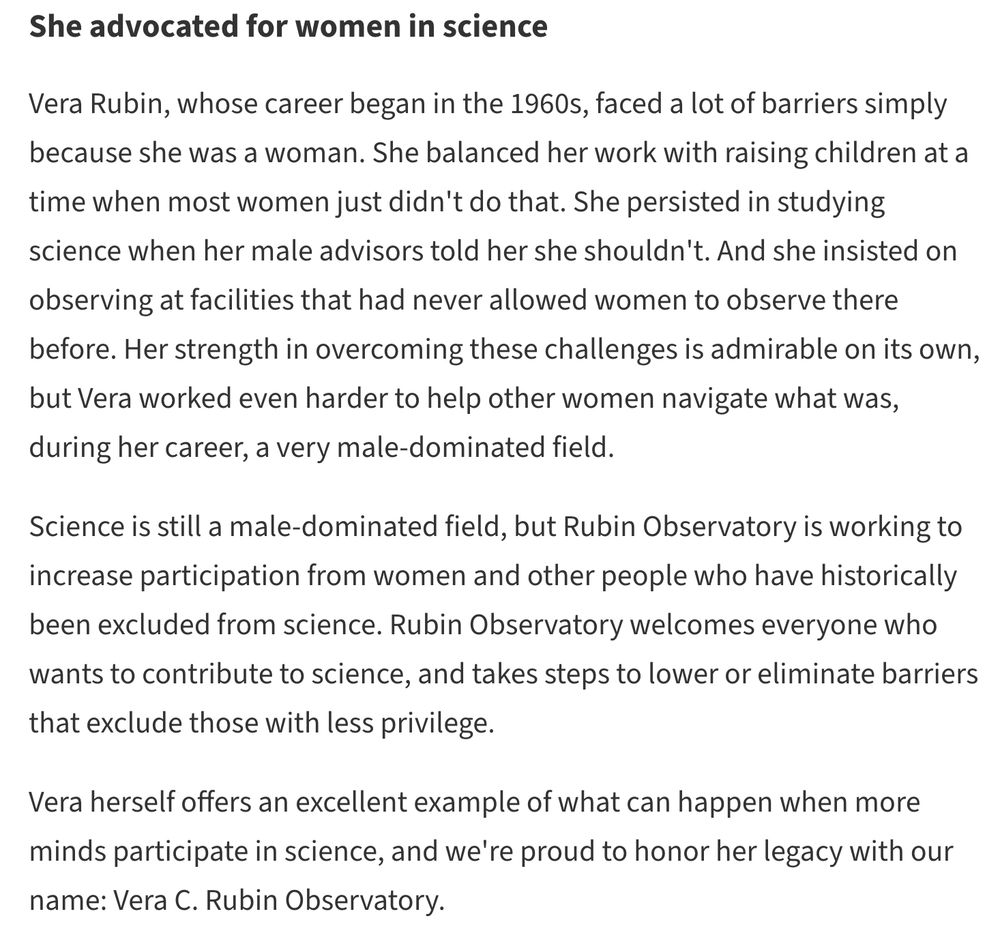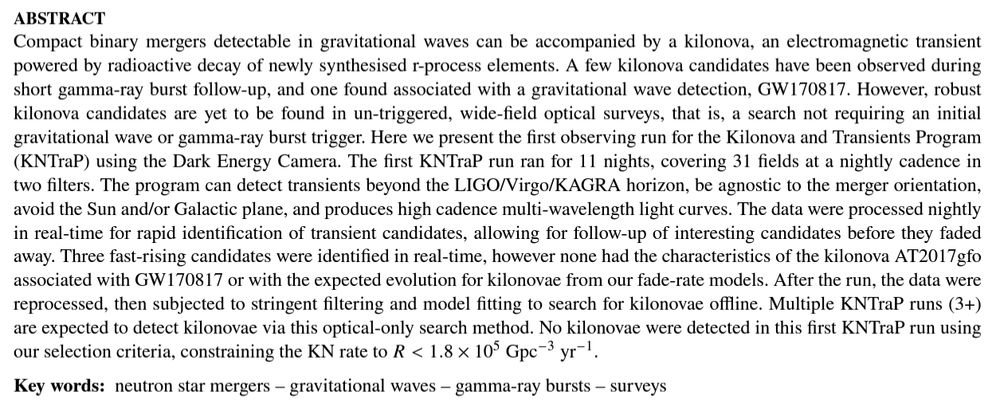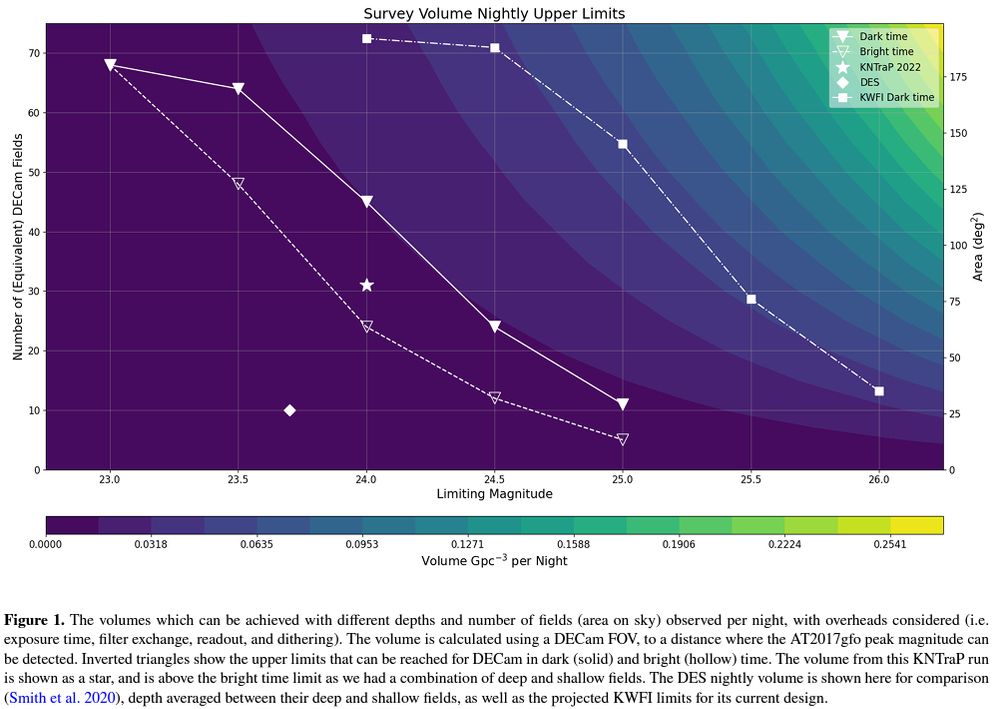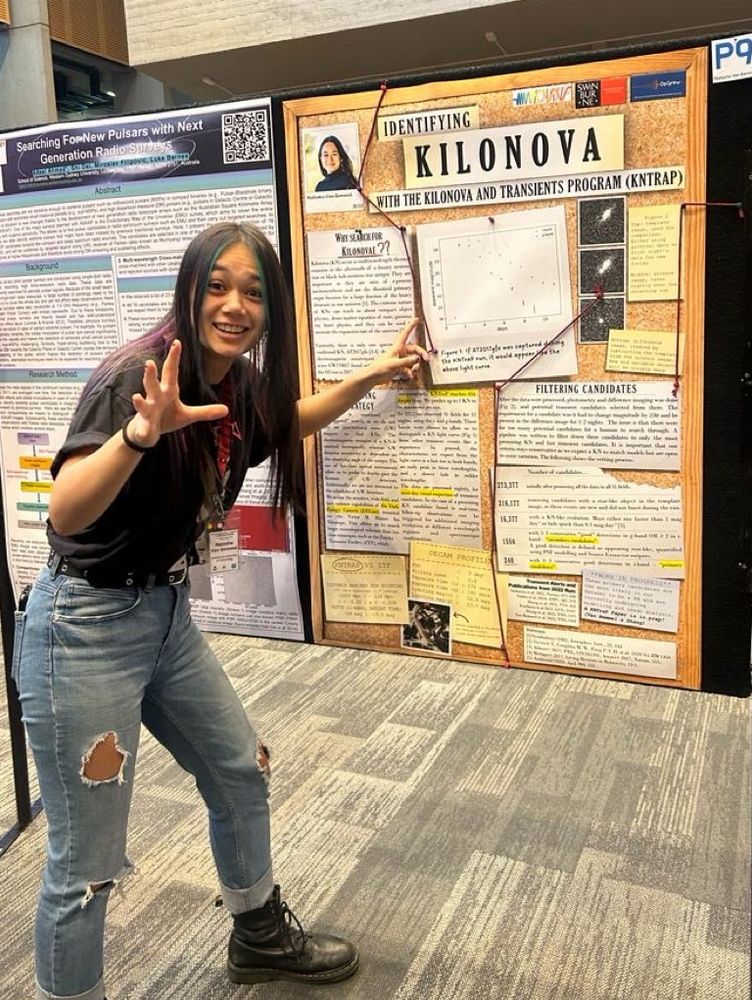Genuinely unreal to have my first paper recognised like this - thank you to the editorial board for considering my work! ✨
12.07.2025 08:02 — 👍 12 🔁 2 💬 0 📌 1


Spot the difference 😤🔭
12.02.2025 00:36 — 👍 41 🔁 11 💬 0 📌 2
With a lot of tough things happening in the world riggr now, the misinformation that stars are dead when you wish on them feels very mean spirited 🥺 luckily, I looked into it and worked out that the stars we wish on are very much alive 🌟 🧪🔭
21.01.2025 21:08 — 👍 97 🔁 12 💬 6 📌 2

Abstract of the KNTraP paper.
Text: Compact binary mergers detectable in gravitational waves can be accompanied by a kilonova, an electromagnetic transient powered by radioactive decay of newly synthesised r-process elements. A few kilonova candidates have been observed during short gamma-ray burst follow-up, and one found associated with a gravitational wave detection, GW170817. However, robust kilonova candidates are yet to be found in un-triggered, wide-field optical surveys, that is, a search not requiring an initial gravitational wave or gamma-ray burst trigger. Here we present the first observing run for the Kilonova and Transients Program (KNTraP) using the Dark Energy Camera. The first KNTraP run ran for 11 nights, covering 31 fields at a nightly cadence in two filters. The program can detect transients beyond the LIGO/Virgo/KAGRA horizon, be agnostic to the merger orientation, avoid the Sun and/or Galactic plane, and produces high cadence multi-wavelength light curves. The data were processed nightly in real-time for rapid identification of transient candidates, allowing for follow-up of interesting candidates before they faded away. Three fast-rising candidates were identified in real-time, however none had the characteristics of the kilonova AT2017gfo associated with GW170817 or with the expected evolution for kilonovae from our fade-rate models. After the run, the data were reprocessed, then subjected to stringent filtering and model fitting to search for kilonovae offline. Multiple KNTraP runs (3+) are expected to detect kilonovae via this optical-only search method. No kilonovae were detected in this first KNTraP run using our selection criteria, constraining the KN rate to R<1.8×10^5 Gpc−3 yr−1.

Plot showing the volume per night covered by a survey. Volume increases towards the top right corner of the plot. DES survey is shown leftmost, then further right is KNTraP with multiple volumes demonstrating the balance between of number of fields/area on sky observed per night versus the depth achieved, both in dark and bright sky time. Rightmost shown are projected KWFI nightly volumes.
My first first-author paper just dropped on arXiv ✨👩🔬🧪🔭
Introducing the KiloNova and Transients Program (KNTraP), a search specifically designed to find a kilonova. Check it out here to see the methods developed to scour the data for kilonova candidates, and what we found:
arxiv.org/abs/2411.16136
26.11.2024 23:01 — 👍 37 🔁 5 💬 1 📌 1
Huge win from @franzanth.bsky.social creating a Content Scraper Blocklist: bsky.app/profile/cont...
It's a blocklist for the kinds of engagement bait accounts that repost stolen content, often with misleading captions.
26.11.2024 04:25 — 👍 13139 🔁 3506 💬 465 📌 256
ORCID
Hi! Can I please be added?
Here's my ORCID: orcid.org/0000-0002-21...
26.11.2024 05:31 — 👍 1 🔁 0 💬 1 📌 0

Cross-section view of a river, whose flow speeds are indicated by grey arrows, and increase from the right to the left. Fish are facing left or right, but for us as external observers, only the fish to the right of the line marked H can make headway towards the right. The fish on the left are in water that is moving faster to the left than they can swim to the right. In effect, H is something like a horizon - nothing that has passed the horizon from the right can subsequently escape into the region to the right of H.
Don't mind me. Just illustrating a text on the river model for black holes. Some fish swimming at the "speed of fish", in a river whose flow speed gets faster from right to left. H is the "river horizon". An external observer will never see a fish that is to the left of H swim to the right. 🧪🔭⚛️
22.11.2024 21:46 — 👍 39 🔁 7 💬 3 📌 0

We base expectations on the intrinsic binary neutron star merger (BNS) rate from gravitational wave detectors, but there are multiple rates from different methods (for a summary+fig below: link.springer.com/article/10.1...).
However, observationally we’re looking at <1 per year with current tech
22.11.2024 22:23 — 👍 3 🔁 0 💬 1 📌 0
A kilonova occurs when a neutron star merges with another neutron star or with a black hole. The kilonova itself is the electromagnetic emission bursting from this event, and is very rare!
22.11.2024 04:01 — 👍 1 🔁 0 💬 1 📌 0

Context: Me at the ASA Annual Scientific Meeting 2023, with my poster about the KiloNova and Transients Program (KNTraP), a survey optimised to find KiloNova without gravitational wave or gamma-ray burst triggers. Won People’s Choice Award 😎
Description: Photo of a woman standing next to a scientific poster in the style of a detective’s corkboard.
Hello!
My name is Natasha and I’m an astrophysics PhD candidate. I work with data from optical telescopes to search for fast evolving explosions in the sky 💥 On the lookout for the strange and unusual, but mainly I’m searching for kilonovae 🌟🔭👩🔬
22.11.2024 03:16 — 👍 89 🔁 5 💬 3 📌 0
I’m currently an astrophysics PhD student, I do fast transient astronomy in optical wavelengths :)
22.11.2024 02:12 — 👍 1 🔁 0 💬 1 📌 0
yes
22.11.2024 02:08 — 👍 0 🔁 0 💬 1 📌 0
@bot.astronomy.blue signup
22.11.2024 02:07 — 👍 1 🔁 0 💬 1 📌 0
The US NGO at NSF NOIRLab supports Gemini Observatory
users in the stages of the astronomical observing cycle, from proposal to data reduction. Visit our website at https://noirlab.edu/science/programs/csdc/usngo.
Hi, I’m Hugh! I'm an astronomy PhD student at the University of Queensland. I work in Bayesian stats, JAX + NumPyro, doingreverberation mapping of active galactic nuclei with OzDES
Website: https://hughmcdougall.github.io
ORCiD: 0009-0008-5846-1543
🔭
Science Communicator 🌌 & Computer Engineer 👨🏻💻 | Trying to inspire people about Science & Technology 🌲 | Also into Sci-Fi | From Italy 🇮🇹
PhD student and space nerd
Planetary scientist, lunar exploration and sustainability policy. Lunar architecture nerd! UMD-CRESST-II Asst. Research Scientist at NASA GSFC. Science Outreach! Ten Outstanding Young Americans 2018. WVU alum. Views are my own.
Official account for Monthly Notices of the Royal Astronomical Society (MNRAS), Geophysical Journal International (GJI) and RAS Techniques and Instruments (RASTI). See also https://academic.oup.com/rasjournals
Keeping you posted on space science activities from the European Space Agency.
Web: http://www.esa.int/science
Privacy Notice: esa.int/connectwithus
#astronomy #space #science
Professor, University of Birmingham
Project Scientist, LSST:UK
grahamsmithastro.com
All views are my own
Ph.D. atmospheric scientist🌎, nuclear engineer☢, 📰 #antarctica
South Pole Station 🐧 http://amzn.to/2klpv3b 🐧
Official account of the LIGO Scientific Collaboration. We detect gravitational waves!
Email: questions@ligo.org
The European Southern Observatory designs, builds & operates world-class observatories on the ground for the benefit of society. More info on eso.org
Makeup Maestro of Naarm
Cara: @starrsonartistry
IG: @iamfrankiestarrson
✦ #SciArt #3Dart #Physics
✦ Previously the establishing Art Director of Quanta Magazine
✦ https://linktr.ee/NatureInTheory
✦ https://www.OlenaShmahalo.com
✦ Art-Only Feed: https://bsky.app/profile/natureintheory.bsky.social/feed/aaadycj4x6e72
❌ NO AI
Pulsar and FRB astronomer | Professor at Swinburne University of Technology | MeerKAT and Murriyang Pulsar Timing / ASKAP FRB searching | he/him
Astrophysicist! Lover of all things gravitational waves, pulsar timing, black holes, and neutron stars | MeerKAT Pulsar Timing Array | Parkes Pulsar Timing Array | he/him
I can drive a car blindfolded but it’s hard to find a blindfold that fits around my car
dark circles and spectral lines
Astronomy postdoc • Perpetually online • Probably napping on the couch
professional internet girl
linktr.ee/gabibelle
Astrophysics PhD Candidate ✨ studies black holes and galaxy evolution 🌌Science Communicator (find me other places at “Space According to Skylar”)






